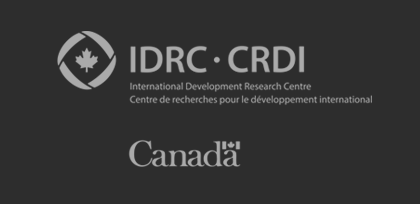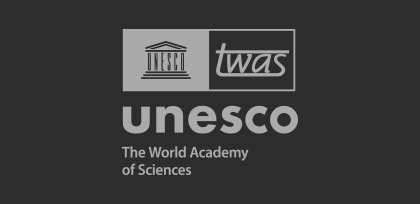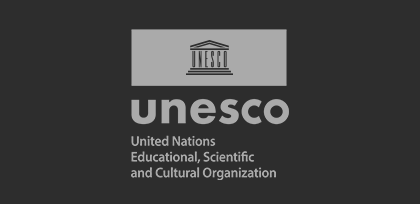OWSD Nigeria National Chapter Presents "Cloud Computing: A Paradigm Shift in Academic Research "
March 03, 2021
OWSD Nigeria National Chapter University of Port Harcourt Branch Series of Scientific Communications: Ugochi A. Okengwu on Cloud Computing: A Paradigm Shift in Academic Research
Cloud Computing: A Paradigm Shift in Academic Research
By
Dr. Ugochi A. Okengwu
INTRODUCTION
Cloud computing is the latest effort in delivering computing resources as a service, Concept of the Cloud Computing is an extension of the concept of distributed computing, which is the process of running a program or application over many computers connected by a network (Pinal 2012) . The Internet makes this process easily achievable even for the general user. Cloud Computing is quickly becoming one of the most popular and promising technologies. It offers variety of opportunities that help the organizations to improve their business and use technology more efficiently (Colin et al 2016). The technology and processes required to store, manage and access data running on computers and transfer to other cloud instead of remaining on your computer. Applications like e-mail, web conferencing, customer relationship management (CRM) execute on cloud. Companies like Google, Amazon, Microsoft etc have invested heavily in their infrastructure creating vast digital spaces to store and process data, also offering cloud services via internet. The concept of Cloud Computing came into existence in the year 1950 with implementation of mainframe computers, accessible via thin/static clients. Since then, cloud computing has evolved from static clients to dynamic ones and from software to services.
CLOUD COMPUTING
Cloud Computing refers to manipulating, configuring, and accessing the hardware and software resources remotely (Figure 1). Also offers platform independency, as the software is not required to be installed locally on the Personal Computer.
Figure 1: Pictorial representation of cloud computing
Source: (https://www.tutorialspoint.com/cloud_computing/cloud_computing_tutorial.pdf)
BASIC CONCEPTS OF CLOUD COMPUTING
There are certain services and models working behind the scene making the cloud computing feasible and accessible to end users. Following are the working models for cloud computing (Figure 2):
- Deployment Models
- Service Models
Figure 2: Basic concepts of cloud computing
Source: (https://innovationsoncloud.wordpress.com/2012/08/10/systemsconcepts-simi...)
DEPLOYMENT MODELS
Deployment models define the type of access to the cloud and how the cloud is located (Figure 3). Cloud can have any of the four types of access: Public, Private, Hybrid, and Community.
Figure 3: Cloud Deployment Models
Source: (https://sites.google.com/site/dcfcloudcomputing/basic-concepts)
PUBLIC CLOUD
Public cloud is a type of cloud computing in which a service provider makes computing resources available to the public via the internet. The public cloud allows systems and services to be easily accessible to the general public (Figure 4). Public cloud may be less secure because of its openness.
Figure 4: Public Cloud Model
Source: (https://www.tutorialspoint.com/cloud_computing/cloud_computing_tutorial.pdf)
PRIVATE CLOUD
Private Cloud is a term for cloud computing services offered over the internet or a private internal network to only selected users instead of the general public. The private cloud allows systems and services to be accessible within an organization (Figure 5). The Private Cloud is operated only within a single organization. It is more secure because of its private nature.
Figure 5: Private Cloud Model
Source: (https://www.tutorialspoint.com/cloud_computing/cloud_computing_tutorial.pdf)
HYBRID CLOUD
Hybrid cloud is a type of cloud computing that combines the computing services offered by public cloud computing and private cloud computing. In this environment critical computing resources are handled on private cloud computing while non-critical computing resources are handled on public cloud computing.
COMMUNITY CLOUD
This type of cloud computing model is for a shared cloud computing service environment that is targeted to a limited set of organizations or employees like banks or heads of trading firms. Community Cloud allows system and services to be accessible by group of organizations. It shares the infrastructure between several organizations from a specific community (Figure 6). It may be managed internally by organizations or by the third-party.
Figure 6: Community Cloud Model
Source: (https://www.tutorialspoint.com/cloud_computing/cloud_computing_tutorial.pdf)
SERVICE MODELS
Cloud computing is based on three basic service models
Software-as-a-Service (SaaS) is a software distribution model in which a cloud provider hosts applications and makes them available to end users over the internet. In this service model an Independent software Vendor may contract a third-party cloud provider to host the application or software. At times with giant IT companies like Microsoft, Google, Amazon could be the software vendor. Example: Salesforce’s Customer Relationship Management software3 and Google Docs4.
Platform-as-a-Service (PaaS) is a cloud computing model where a cloud computing service provider delivers hardware and software to end users or customers. Example: Google App Engine5 and Microsoft Azure6.
Infrastructure-as–a-Service (IaaS) is a service model that hosts infrastructure on the public and private cloud instead of in a traditional on-premises data center. The infrastructure is delivered to customers or end users on demand while being fully managed by the service provider. Example: Amazon Web Services’ EC2 and S37.
Figure 7: Service Models
Source: (https://sites.google.com/site/dcfcloudcomputing/basic-concepts)
CLOUD STACK SERVICE MODEL RESPONSIBILITIES
The responsibilities of the various service models depend on the choice of the cloud computing service subscriber (Figure 8).
If a subscriber is going for Traditional IT, then he/she will be responsible for all necessary infrastructure involved to set up cloud computing, from application to networking services. For IaaS(Infrastructure as a Service) the cloud computing subscriber will be responsible for Applications, Runtimes, Security & Integration, databases and Servers, while the cloud computing service provider will be responsible for providing virtualization, Server HW, Storage and Networking Services. PaaS(Platform as a Service) the cloud computing subscriber will be responsible for Applications services while the cloud computing service provider will be responsible for providing , Runtimes, Security & Integration, databases and Servers, Virtualization, Server HW, Storage and Networking Services.
SaaS(Software as a Service) the cloud computing subscriber will not be responsible for any of the cloud computing services while the cloud computing service provider will be responsible for providing Applications, Runtimes, Security & Integration, Databases, Servers, Virtualization, Server HW, Storage and Networking Services.
Figure 8: Cloud stack service model responsibilities
Source: (https://dachou.github.io/2018/09/28/cloud-service-models.html)
BENEFITS OF CLOUD COMPUTING
Cloud computing represents a shift away from computing as a product that is purchased to computing as a service that is delivered to consumers and has the following benefits:
- Cost Effective especially public cloud
- Reliability: It employs large number of resources from different locations. If any of the resources fails, public cloud can employ another one.
- Flexibility: Public cloud can smoothly integrate with private cloud, which gives customers a flexible approach.
- Location Independence: Cloud services are delivered through Internet, ensuring location independence.
- Utility Style Cost: It is based on pay-per-use model and resources are accessible whenever customer needs them.
- High Scalability: Cloud resources can be scaled up or down according to the requirement.
BENEFITS OF CLOUD COMPUTING IN ACADEMIC RESEARCH
- It constitutes a fundamental shift in the way researchers are provided with computing resources, due to digitization of most research activities, the need to procure varieties of computing products arises. Cloud computing has made it possible for academic researchers to have easy access to different computing services
- It enables and redefines the researcher’s ability to collaborate, perceive, categorize, predict and recommend in all activities including academic research by sharing common digital platform.
- It provides significant reduction in cost of carrying out academic research due to pay per use model.
TOP 10(TEN) CLOUD SERVICE PROVIDERS
- Amazon Web Services (AWS)
- Microsoft Azure
- Google Cloud
- Alibaba Cloud
- IBM Cloud
- Oracle
- Salesforce
- SAP
- Rackspace Cloud
- VMWare
REFERENCES
- Pranay k., Sumitha k., Uma Rani N.and Jangaon .(2013). Effective ways cloud computing can contribute to education success. Advanced Computing: An International Journal (ACIJ ), 4(4).
- Colin T. S. X., Felicia T. W. X. (2016). Benefits and Challenges of the Adoption of Cloud Computing in Business. International Journal on Cloud Computing: Services and Architecture (IJCCSA). 6(6): 1-8
- Pinal V. C. (2012). Cloud Computing In Distributed System. International Journal of Engineering Research & Technology (IJERT). 1(10): 2 - 4.
- Greenwood D., Khajeh-Hosseini, A., Smith J. and Sommerville I. (2011). The Cloud Adoption Toolkit: Addressing the Challenges of Cloud Adoption in Enterprise. Cloud Computing Co-laboratory, School of Computer Science, University of St Andrews, UK.
- McAfee, A. (2011). What Every CEO Needs to Know About the Cloud.
- Duncan W., Makori E. and Rabah K. (2014). Utilization of Cloud Computing in Education and Research to the Attainment of Millennium Development Goals and Vision 2030 in Kenya. Universal Journal of Educational Research.2(2): 193-199.
- https://dachou.github.io/2018/09/28/cloud-service-models.html retrieved January 2021.
- https://www.tutorialspoint.com/cloud_computing/cloud_computing_tutorial.pdf retrieved December 2020.
- https://innovationsoncloud.wordpress.com/2012/08/10/systemsconcepts-simi... retrieved December 2020
- https://sites.google.com/site/dcfcloudcomputing/basic-concepts retrieved January 2021
CONTACT
Email: Ugochi.okengwu@uniport.edu.ng
Linkedin: https:// www.linkedin.com/in/ugochi-okengwu-ph-d-1676a7187/
ORCiD ID: https://orcid.org/0000-0003-1695-0660
Twitter: @ugodepaker4
Instagram: @4Dsleys











































